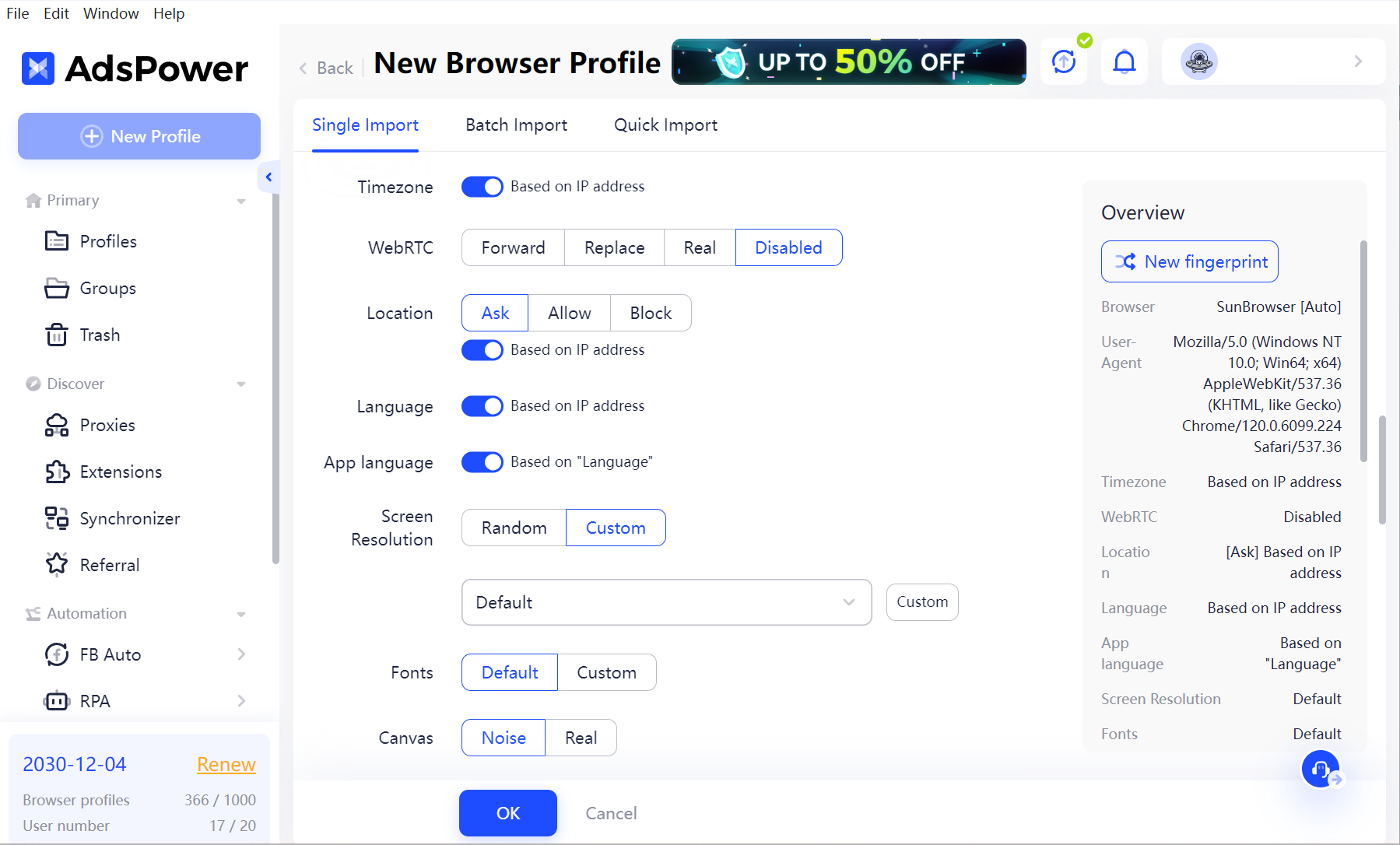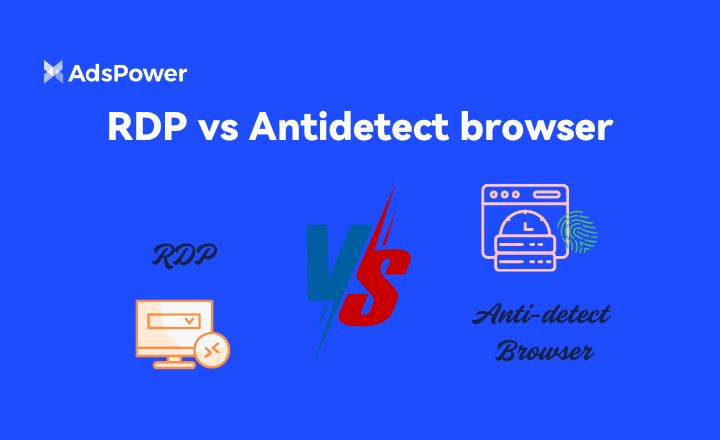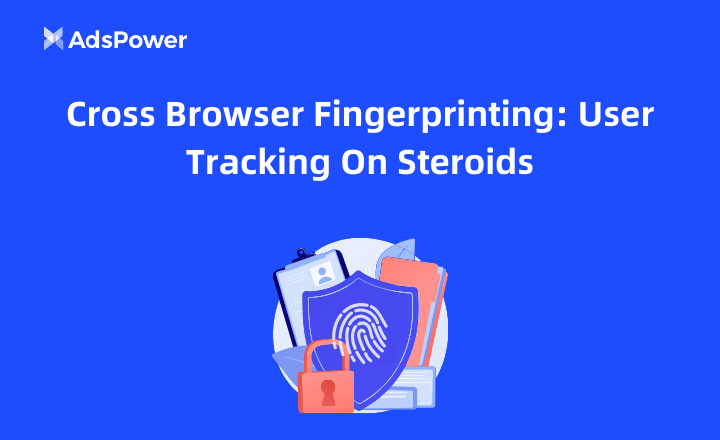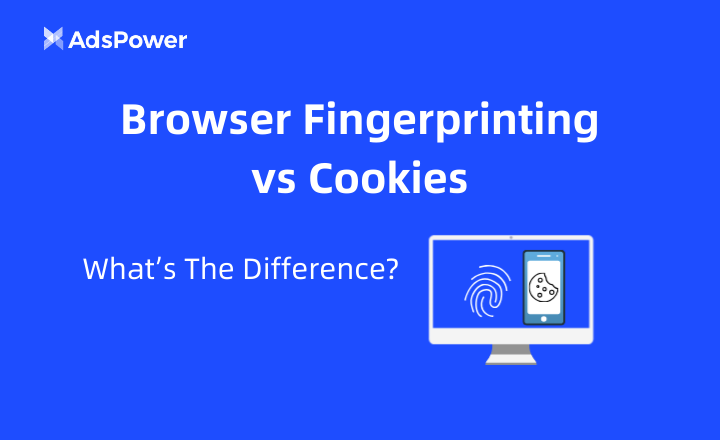브라우저 지문 인식을 피하는 방법: 종합 가이드
웹사이트를 방문할 때마다 자신도 모르게 자신의 정체성을 드러내는 자세한 흔적을 남기게 됩니다. 놀랍지 않나요?
하지만, 그것은 당신의 잘못이 아닙니다. 웹사이트는 브라우저 지문이라는 기술을 통해 당신의 온라인 동작을 비밀리에 추적합니다.
하지만 걱정하지 마세요. 방어수단이 없는 것은 아닙니다. 저희 가이드에서는 최소한의 본인 정보만 공개하면서 브라우저 지문을 방지하는 방법을 알려드립니다.
하지만 먼저, 브라우저 지문 인식이 실제로 무엇을 의미하는지 알아보겠습니다.
브라우저 지문 인식이란 무엇인가요?

브라우저 핑거프린팅은 웹사이트에서 브라우저의 고유 식별자 또는 "디지털 지문"을 생성하는 데 사용되는 복잡한 추적 방법입니다. 이 디지털 ID는 다양한 소프트웨어 및 하드웨어 구성을 통해 구성됩니다.
운영 체제, 설치된 언어, 시간대부터 화면 해상도, 글꼴, 브라우저 버전, 브라우저 확장 프로그램, 사용자 에이전트, 심지어 MAC 주소까지 모든 세부 사항이 이 고유한 ID를 만드는 데 기여합니다.
이 데이터의 고유성은 놀랍습니다. 예를 들어, 연구 286,777개의 브라우저 지문 중 오직 하나만이 다른 사용자의 지문과 정확히 일치할 가능성이 있다는 사실이 밝혀졌습니다. 이 통계는 사람의 지문과 마찬가지로 브라우저 지문도 고유하기 때문에 지문이라고 불리는 이유를 설명합니다.
브라우저 지문이 얼마나 고유한지 궁금하신가요? AmIUnique 그리고 직접 확인해 보세요. 240만 개의 지문 데이터 세트에 따르면 내 브라우저는 고유한 것으로 식별되었습니다. 약 57가지의 소프트웨어 및 하드웨어 속성에 대해 sp;on. 따라서 단연 그 고유성은 사람의 지문과 비슷합니다.
브라우저 핑거프린팅은 방문자 이동 추적, 개인화된 콘텐츠 제공, 사기 방지 등 웹사이트에 여러 가지 이점을 제공합니다. 하지만 단점도 있습니다. 귀하의 데이터는 광고주, 사이버 범죄자 또는 감시 기관의 손에 들어갈 수 있습니다.
개인정보보호에 민감한 사람들에게 개인 정보에 쉽게 접근할 수 있다는 생각은 불안하게 느껴질 수 있습니다.
하지만 무력감을 느끼지 마세요. 브라우저 지문을 일정 수준까지 숨길 수 있는 여러 가지 지문 보호 전략이 있습니다.
브라우저 지문을 방지하고 개인 정보를 보호하는 방법을 자세히 알아보겠습니다.
브라우저 지문을 피하는 방법은?
브라우저 지문 수집은 본질적으로 엄청난 양의 데이터를 수집하며, 여기에는 민감한 개인 정보도 포함될 수 있습니다.
개인 정보가 아니더라도 웹사이트가 방대한 양의 데이터를 추적한다면 경계해야 합니다. 결국 귀하의 데이터는 귀하의 소유이며, 그 데이터를 어떻게 사용하고 누가 접근할 수 있는지는 귀하만이 결정해야 합니다.
지문을 숨기는 방법에 대해 걱정하는 사람이 있다면, 당신만 그런 것이 아니라는 점을 기억하세요. 수많은 사용자가 브라우저 지문을 숨기는 방법을 검색함에 따라 개인 데이터를 제어하려는 욕구가 그 어느 때보다 높아졌습니다.
예를 들어, 통계는 미국 성인의 81-84%는 정부 기관과 기업 모두가 수집한 데이터에 대해 무력감을 느낍니다.
그러나 고급 추적 및 지문 보호 조치를 사용하면 이러한 문제를 어느 정도 완화할 수 있습니다.
그러므로 이러한 조치를 통해 브라우저 지문을 방지하는 방법을 알아보겠습니다.
소프트웨어를 정기적으로 업데이트하세요
모든 사람에게 맞는 완벽한 전략은 없지만, 지문 인식 방지를 위한 한 가지 방법은 정기적인 소프트웨어 업데이트입니다.
브라우저 개발자는 버그 수정, 취약점 패치, 개인정보 보호 강화를 위해 업데이트를 자주 제공합니다. 일부 업데이트에는 이전에는 접근 가능했던 특정 유형의 데이터를 웹사이트에서 수집하지 못하도록 차단하는 기능도 포함될 수 있습니다.
따라서 브라우저와 모든 관련 소프트웨어 애플리케이션을 최신 상태로 유지하는 것이 중요합니다. 간단해 보이지만, 이 방법을 사용하면 적어도 어느 정도는 브라우저 지문을 피할 수 있습니다.
브라우저 설정 수정
브라우저 지문을 더욱 방지하려면 브라우저 설정을 특정하게 변경하는 것이 한 가지 방법이 될 수 있습니다. 흥미롭게도, 많은 브라우저에는 지문 인식 보호를 강화하기 위한 지문 인식 방지 기능이 탑재되어 있습니다.
그러나 이러한 설정은 기본적으로 활성화되어 있지 않으며, 놀랍게도 소수의 사용자만이 이에 대해 알고 있습니다.
Firefox 및 Brave와 같은 브라우저에서 지문 보호를 활성화하는 방법은 다음과 같습니다.
Brave 브라우저:
Brave에서 지문 인식 방지 기능을 활성화하는 것은 매우 간단합니다.
-
Shield 설정으로 이동합니다.
-
지문 차단 드롭다운 메뉴를 찾아 "표준" 또는 "엄격" 보호 수준을 선택합니다.
하지만 엄격 옵션을 선택하면 일부 웹사이트에 대한 액세스가 제한될 수 있다는 점에 유의하세요.
Firefox:
Firefox의 지문 보호 기능은 좀 더 고급 기능입니다. Firefox에서 URL 입력란에 about:config를 입력하고 다음 설정을 수정하세요.
-
privacy.resistFingerprinting을 true
로 설정하세요. -
webgl.disabled를 true
로 설정하세요. -
media.peerconnection.enabled를 false
-
geo.enabled를 false
로 설정합니다. -
마지막으로, privacy.firstparty.isolate를 true로 설정합니다.
이러한 설정을 사용자 지정하면 브라우저 지문을 방지하는 브라우저의 기능이 크게 향상됩니다.
VPN을 사용하세요
VPN은 원래 IP 주소를 먼 위치의 IP 주소로 마스킹하고 인터넷 트래픽을 VPN 서버를 통해 라우팅하는 방식으로 작동합니다. 이 과정은 사용자의 실제 물리적 위치를 숨기고 지문 수집자가 사용자를 정확하게 추적하는 것을 더욱 어렵게 만듭니다.
하지만 VPN은 사용자의 IP 주소와 위치를 숨길 수 있지만 브라우저 지문은 숨기지 않습니다. 하지만 웹사이트는 사용자의 실제 위치와 직접 연결하지 않고도 디지털 지문을 수집할 수 있습니다.
하지만 브라우저 지문 수집을 방지하려면 다면적인 접근 방식이 필요합니다. 여러 가지 지문 방지 방법을 병행해야 합니다. VPN은 브라우저 지문을 피하기 위한 이 광범위한 전략의 한 구성 요소 역할을 합니다.
데이터 브로커 기록에서 프로필 삭제
약간 이상하게 보일 수 있지만, 데이터 브로커 기록에서 프로필을 제거하는 것은 지문 방지 노력의 중요한 측면입니다. 이 방법은 브라우저 지문을 방지하는 방법을 직접적으로 보여주지는 않지만, 온라인 데이터베이스에서 브라우저 지문을 삭제하여 그 여파를 해결합니다.
브라우저 지문을 비롯한 개인 정보가 현재 데이터 브로커 아카이브에 저장되어 있을 가능성이 높습니다.
데이터 브로커는 사용자의 정보를 수집하고 이를 통해 수익을 창출하는 데 주력하는 기관입니다. 이들은 오프라인 및 온라인 소스에서 방대한 양의 정보를 수집하여 사용자에 대한 상세한 프로필을 생성합니다. 이 프로필은 광고주, 해커, 심지어 정부 기관에 판매될 수 있습니다.
Google에서 특정 제품을 검색한 직후 소셜 미디어 플랫폼에서 특정 제품 광고를 본 적이 있습니까? 또는 그 반대의 경우도 마찬가지입니다. 이는 광고 플랫폼이 데이터 브로커로부터 데이터를 구매했기 때문입니다.
하지만 실제로는 사용자가 할 수 있는 일이 있습니다. 현재 많은 서비스에서 사용자를 대신하여 데이터 브로커에게 접근하여 데이터베이스에서 개인 데이터를 삭제합니다. DeleteMe, Incogni, OneRep과 같은 인기 서비스는 바로 이러한 작업을 전문으로 합니다.
이러한 서비스를 귀하가 취한 다른 지문 방지 조치와 함께 사용하면 디지털 발자국을 최소화할 수 있습니다.
개인정보 보호 중심 확장 프로그램 사용
특정 지문 전략을 방어하여 브라우저 지문을 방지하는 데 사용할 수 있는 브라우저 확장 프로그램이 많이 있습니다. 하지만 확장 프로그램을 사용할 때는 신중하게 접근하는 것이 중요합니다.
아이러니하게도, 사용자를 보호하기 위한 확장 프로그램이 브라우저 지문을 더욱 고유하게 만들 수 있습니다. 브라우저 지문을 피하려는 노력이 역효과를 내지 않도록 하려면 널리 사용되고 신뢰할 수 있는 확장 프로그램을 사용해야 합니다.
그러므로, 성능이 좋은 몇 가지 지문 방지 확장 프로그램을 소개합니다.
Chrome 사용자의 경우:
-
WebRTC 유출 방지: 주소WebRTC 누출은 브라우저 기반 비디오 또는 오디오 통신 중에 자주 발생합니다.
-
CanvasBlocker: 차단캔버스 지문 시도, 브라우저의 고유한 캔버스 이미지 렌더링을 통해 사용자를 추적하는 방법
Firefox 사용자의 경우:
-
추적: 다양한 지문 인식 기술로부터 보호 기능을 제공합니다.
-
카멜레온: 사용자 에이전트를 변경할 수 있으므로 웹사이트에서 브라우저의 신원을 파악하기 어렵습니다.
JavaScript 비활성화
브라우저 핑거프린팅 JavaScript 코드는 소프트웨어 및 하드웨어 속성 수집에 중요한 역할을 합니다. 따라서 JavaScript를 비활성화하면 브라우저 핑거프린팅을 방지하는 데 매우 유용할 수 있습니다. JavaScript를 비활성화하면 이러한 스니펫 실행이 차단되어 브라우저 핑거프린팅을 숨기는 데 도움이 됩니다.
하지만 여기에는 단점이 있습니다. JavaScript는 추적에만 사용되는 것이 아닙니다. 많은 웹사이트가 기능적인 측면에서 JavaScript를 활용하는데, 이는 대화형 기능과 동적 콘텐츠를 지원하기 때문입니다. 이 기능을 끄면 웹 환경의 응답성이 떨어지거나 작동하지 않을 수 있습니다.
다행히도 이 문제에 대한 해결 방법이 있습니다. NoScript 및 Adblock Pluss는 웹사이트에서 JavaScript를 선택적으로 활성화 및 비활성화할 수 있도록 하여 중간적인 입장을 제공합니다.
안티 핑거프린트 브라우저 사용
위에서 설명한 안티 핑거프린팅 방법은 어느 정도의 핑거프린팅 보호 기능을 제공하지만 한계가 있습니다. 특정 상황에만 적용되며 브라우저 핑거프린팅을 완전히 차단할 수는 없습니다.
게다가 JavaScript 비활성화와 같은 일부 전략은 웹사이트 기능에 영향을 미칠 수 있으며, 고유 확장 프로그램을 사용하면 의도치 않게 브라우저 핑거프린팅이 더욱 고유해질 수 있습니다.
하지만 이러한 제한이 온라인 신원이 항상 노출된다는 것을 의미하지는 않습니다. 그렇다면 브라우저 지문 공격을 근본적으로 방지하려면 어떻게 해야 할까요? 정답은 지문 방지 브라우저를 사용하는 것입니다.
이러한 전용 브라우저는 고급 추적 및 지문 보호 기술을 사용하여 변경된 데이터를 추적기에 제공합니다.본인 신원이 노출되지 않도록 합니다.
브라우저 지문을 스푸핑하는 가장 효과적인 방법은 AdsPower라는 도구를 사용하는 것입니다. AdsPower는 온라인 추적을 더욱 어렵게 만드는 방식으로 브라우저 속성을 변경하는 데 매우 유용한 도구로 알려져 있습니다. 여러 대의 컴퓨터에서 작업하는 것은 비용이 많이 들고 비효율적일 수 있지만, AdsPower는 가상 브라우저 프로필 형태의 솔루션을 제공합니다. 이러한 프로필은 본질적으로 다양한 컴퓨터의 속성을 모방하는 데 사용할 수 있는 디지털 ID입니다.

따라서 지금 바로 시작하세요 최고의 지문 방지 브라우저로 온라인 개인 정보를 안전하게 보호하세요. 여러 가상 프로필을 사용자 지정하고 필요에 따라 지문 설정을 조정하는 유연성을 경험해 보세요.

다른 사람이 읽은 항목
- 2025년 최고의 Whoer 대체 사이트 8곳 (정확하고 개인 정보가 보호되는 IP 확인 도구)

2025년 최고의 Whoer 대체 사이트 8곳 (정확하고 개인 정보가 보호되는 IP 확인 도구)
Whoer.net의 대안을 찾고 계신가요? 정확하고 개인 정보 보호가 철저한 지문 분석 및 향상된 온라인 기능을 제공하는 최고의 IP 확인 도구 8가지(2025년 기준) 목록을 확인해 보세요.
- WebRTC는 무엇에 사용되나요? WebRTC가 IP 주소를 유출할까요?

WebRTC는 무엇에 사용되나요? WebRTC가 IP 주소를 유출할까요?
WebRTC가 무엇인지, 어떤 용도로 사용되는지, IP 주소가 유출되는지 여부, 그리고 AdsPower의 WebRTC 모드와 같은 도구를 사용하여 보안을 유지하는 방법에 대해 알아보세요.
- RDP vs Antidetect Browser: 차이점은 무엇이고 어느 것이 더 안전한가요?

RDP vs Antidetect Browser: 차이점은 무엇이고 어느 것이 더 안전한가요?
계정 관리에 RDP 또는 안티디텍트 브라우저를 사용하고 계신가요? RDP와 안티디텍트 브라우저의 차이점과 사용 방법을 확인하세요.
- 크로스 브라우저 핑거프린팅: 스테로이드를 이용한 사용자 추적

크로스 브라우저 핑거프린팅: 스테로이드를 이용한 사용자 추적
웹사이트는 크로스 브라우저 핑거프린팅을 통해 사용자를 추적할 수 있습니다. 이 글에서는 크로스 브라우저 핑거프린팅의 위험성과 개인정보 보호 대책에 대해 살펴봅니다.
- 브라우저 지문 인식과 쿠키: 차이점은 무엇인가?

브라우저 지문 인식과 쿠키: 차이점은 무엇인가?
이 블로그에서는 브라우저 지문과 쿠키의 차이점을 강조합니다. 두 가지 추적 방법 모두 고유한 특성을 가지고 있습니다.



